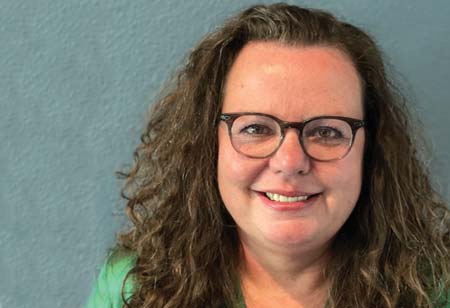Thank you for Subscribing to Healthcare Business Review Weekly Brief

Utilizing Care Management to Reduce Length of Stay and Improve Patient Outcomes
Healthcare Business Review
Patients diagnosed with chronic disease processes are some of the largest consumers of healthcare. While healthcare utilization is high, outcomes do not reflect that. Many individuals with chronic diseases are not given a clear expectation of how their disease will progress and what they and their families can expect. Clinicians understand that from initial diagnosis it would be valuable to start the conversation related to palliative care. However, people that do not work in healthcare are often afraid of the term palliative care as they associate it with not treating their disease. Within my organization we decided to try changing the nomenclature. Our goal was to see if we could help our patients have a higher quality of life, spend less time in the hospital, and begin to prepare them for what the end-stage process of what their disease might look like.
We experienced a change in the leadership of our care management team and decided to use this as an opportunity to develop new partnerships and change the way we deliver care to our patients with chronic diseases. As the CNO, one of our long-tenured ICU RN’s came to me asking how we could start a palliative care program. He shared with me that we had a patient with a chronic disease that had dozens of admissions over a three year period. Upon speaking with the patient and the family he felt they did not have a realistic idea of what their disease progression would look like. This led to many admissions to the hospital including the ICU. I knew that we had to do something to better serve this patient population and empower our clinicians to see changes they believed would lead to increased patient satisfaction and more time for patients with their families outside of the hospital setting.
We pulled together a multidisciplinary team of clinicians including hospitalists, nurses, care managers, social workers, and leadership. We discussed the hesitance of patients and providers to discuss palliative care. An idea was thrown out to call our team, The Chronic Disease Management (CDM) Team rather than the Palliative Care Team. Our hope is that the name change will encourage people to participate. Now that we had a name it was time to put some processes in place. How would we have patients referred to us? Who would the provider be? How would we manage patients in the hospital and post discharge? What chronic diagnosis would we start with to build a strong and sustainable program? All of these questions and more needed to be answered.
How would we have patients referred to the team? This would have to be a dual approach. Ideally, the primary care physician would refer all patients with a newly diagnosed chronic condition. Early enrollment would increase patient buy-in for the process leading to improved quality of life for a longer period.
However, we also had a patient population that had been diagnosed already and were in differing phases of their disease process. Patients that were hospitalized with either a primary or secondary diagnosis that fit into our program would also need a referral.
We will work with admitting physicians to provide education on the new program, starting with the hospitalist group as they admit the majority of patients. We will work with our nursing informaticists to not only create the referral order but also a cheat sheet for providers. Working to make the process as smooth as possible for the providers should help with enrollment in the CDM program.
Who would fill the role of provider? The multidisciplinary team decided that an advanced practice nurse would be a good fit in our new program. This individual would be employed by our hospitalist group and would work closely with a nurse navigator that would be employed by the hospital. These two roles will be critical in the success of this program. As a team they will be helping our patients and families develop and implement plans to live with chronic diseases as well as plan for the future.
Our Goal was to See if we Could Help our Patients have a Higher Quality of Life, Spend Less Time in The Hospital, and begin to Prepare Them for What The End-Stage Process of What their Disease might Look Like
Managing patients both as inpatients and post discharge will be important tasks for our team. As patients and families develop trusting relationships with the CDM team, their care will be managed in a way that increases their quality of life and helps them to understand what the future might hold. When the patients are discharged the RN navigator will follow them to monitor for signs and symptoms that could lead to readmission. The goal is to manage symptoms and prevent readmission.
We decided to start with Chronic Obstructive Pulmonary Disease (COPD) and Chronic Heart Failure (CHF). Out patient monitoring would include weight gain, pulse oximetry measurements, blood pressure measurements, and periodic phone check-ins. Once patients are enrolled with the CDM Team they will be given portable pulse oximeters, portable blood pressure devices, and scales, along with instructions on how, when, and why to record their results at home. As we grow and develop the program our goal will always be to provide the best, most holistic care.









